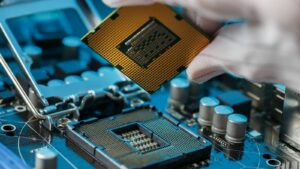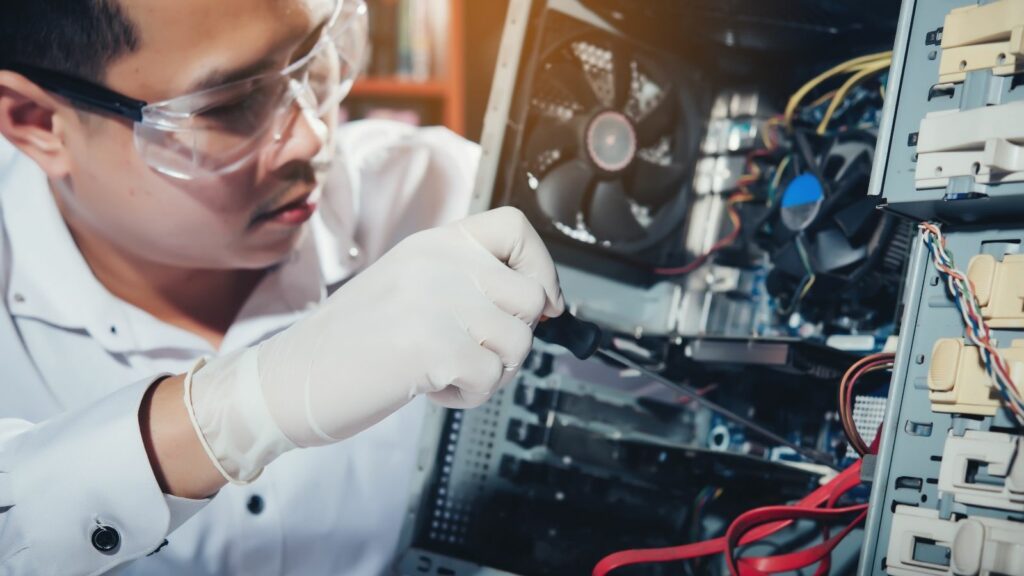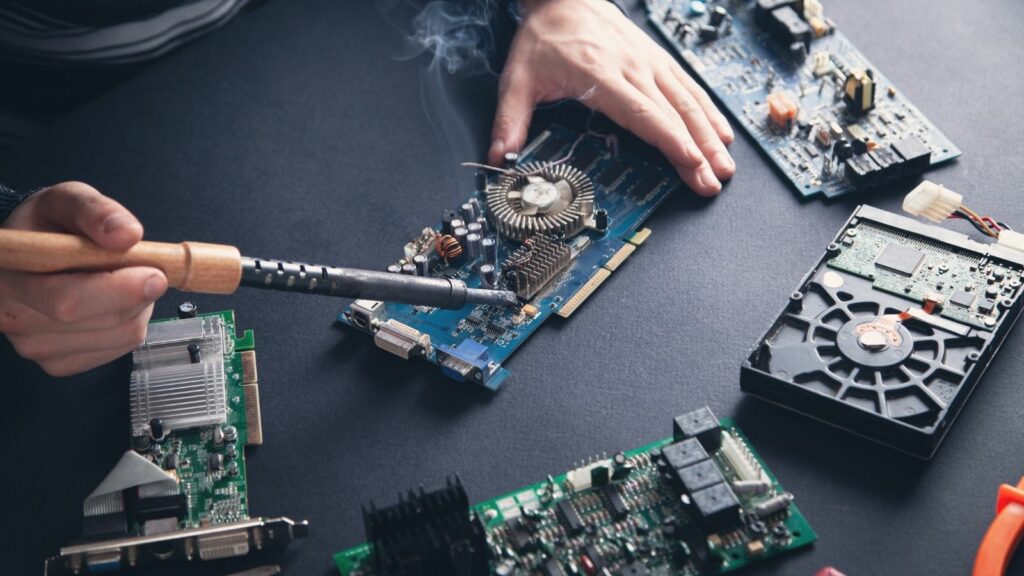”
Key Takeaways
- Definition of Computer Hardware: Computer hardware includes the physical components that constitute a functioning computer system, essential for its operation and performance.
- Key Components: Important hardware pieces include the Central Processing Unit (CPU), Random Access Memory (RAM), motherboard, power supply unit (PSU), and various storage devices that affect overall computing capabilities.
- Roles of Input and Output Devices: Input devices (like keyboards and mice) allow users to interact with the computer, while output devices (like monitors and printers) present processed data back to users.
- Storage Solutions: Different types of storage (HDDs, SSDs, USB drives) impact data retrieval speed and the overall efficiency of data management, showcasing their importance in computer systems.
- Understanding Hardware Functions: Recognizing the distinct roles of hardware components aids in troubleshooting, maintenance, and informed decision-making regarding upgrades and replacements.
- Comprehension of Performance Factors: Grasping how each hardware element contributes to a computer’s functionality enhances one’s ability to optimize performance, improving multitasking and operational efficiency.
Understanding computer hardware is essential for anyone navigating the digital world. Hardware forms the backbone of any computer system, encompassing the physical components that enable it to function. From the central processing unit to storage devices, each piece plays a crucial role in the overall performance and capability of a computer.
But with so many components available, it can be challenging to identify which items qualify as hardware. This article simplifies that task by focusing on key elements and clarifying common misconceptions. By pinpointing two specific components that are undeniably considered hardware, readers will gain a clearer understanding of their computer’s anatomy and functionality.
Which Of The Following Are Considered Computer Hardware? (Select Two.)
 Computer hardware comprises the physical components that create a functioning computer system. This includes several essential parts, each contributing to overall performance.
Computer hardware comprises the physical components that create a functioning computer system. This includes several essential parts, each contributing to overall performance.
- Central Processing Unit (CPU): The CPU functions as the brain of the computer. It performs calculations and executes instructions, significantly affecting processing speed. Without a CPU, a computer cannot operate.
- Random Access Memory (RAM): RAM temporarily stores data and applications actively in use. This allows for quick access, enhancing multitasking capabilities. More RAM typically leads to better performance during intensive tasks.
- Storage Devices: Storage devices, such as hard drives and solid-state drives, retain data persistently. They store operating systems, applications, and user files. The type of storage influences loading times and data retrieval speed.
- Motherboard: The motherboard connects all components within the computer. It houses the CPU, RAM, and storage devices, allowing communication between parts. A robust motherboard supports higher performance and expansion options.
- Power Supply Unit (PSU): The PSU converts electrical energy from an outlet into usable power for the computer. It distributes power to various components, ensuring stable operation without overload.
Understanding these components and their functions aids in making informed decisions about upgrades, repairs, and system configurations. Recognizing what constitutes computer hardware reinforces comprehension of how each element contributes to a computer’s overall ability and efficiency.
Types of Computer Hardware
Computer hardware consists of various components essential for the operation of a computer system. Each type plays a crucial role in facilitating interaction, processing, and data management.
Input Devices
Input devices enable users to provide data and commands to the computer. Common examples include:
- Keyboard: Utilizes keys for text input and command execution.
- Mouse: Controls the on-screen pointer, allowing navigation and interaction with graphical user interfaces.
- Scanner: Transforms physical documents into digital format for storage or editing.
- Microphone: Captures audio input for communication or recording purposes.
Input devices are integral for user interaction, enhancing usability and accessibility.
Output Devices
Output devices present processed data to users in a comprehensible format. Key examples include:
- Monitor: Displays visual output from the computer, facilitating interaction and content consumption.
- Printer: Produces physical copies of digital documents and images.
- Speakers: Emit sound output for multimedia applications, enhancing auditory experiences.
- Projector: Projects visual output onto larger surfaces, useful in presentations.
Output devices convey information effectively, playing a vital role in user experience.
Storage Devices
Storage devices retain data for persistent access and management. Major types include:
- Hard Disk Drive (HDD): Uses magnetic storage to hold large amounts of data, offering cost-effective solutions for data storage.
- Solid State Drive (SSD): Utilizes flash memory for faster data access and transfer speeds, improving overall computer performance.
- USB Flash Drive: Portable storage device, ideal for transferring files between devices.
- Optical Disc: Stores data on discs such as CDs and DVDs, commonly used for media playback and data backup.
Storage devices impact data retrieval speeds and overall system efficiency, essential for effective computing.
Key Components of Computer Hardware
Computer hardware encompasses various physical components that contribute to a computer’s functionality and performance. Key components include the Central Processing Unit (CPU), motherboard, and Random Access Memory (RAM). Each element plays a critical role in the overall operation of a computer system.
Central Processing Unit (CPU)
The CPU acts as the brain of the computer. It performs calculations and executes instructions vital for processing data. Modern CPUs contain multiple cores, allowing parallel processing that significantly enhances speed and efficiency. The performance of a CPU directly influences how quickly applications run and how effectively tasks are completed.
Motherboard
The motherboard serves as the backbone of a computer. It connects all hardware components, such as the CPU, RAM, and storage devices, facilitating communication between them. A motherboard features various slots and ports for expansion cards, which increase a system’s capabilities. Its layout and chipset determine compatibility with different hardware, affecting overall system performance.
Random Access Memory (RAM)
RAM is critical for temporary data storage during active processes. It allows quick access to data the CPU is currently using, boosting multitasking capabilities and performance. More RAM enables a computer to handle multiple applications simultaneously without lag. The speed and capacity of RAM directly impact the responsiveness and efficiency of the system.
Importance of Distinguishing Hardware Components
 Understanding hardware components is crucial for anyone engaged with technology. Identifying which elements comprise computer hardware ensures effective troubleshooting and maintenance.
Understanding hardware components is crucial for anyone engaged with technology. Identifying which elements comprise computer hardware ensures effective troubleshooting and maintenance.
Recognizing components falls into categories like input, output, and storage devices. Input devices include keyboards, mice, and scanners. These devices allow users to interact with computers and input commands. Output devices consist of monitors, printers, and speakers, which present information back to users. Storage devices, such as hard drives and USB flash drives, retain crucial data for ongoing access.
Appreciating the different roles of these components enhances users’ grasp of computer functionality. For instance, knowing that the CPU executes instructions while the motherboard connects all elements facilitates a deeper understanding of performance optimization.
Differentiating hardware types aids individuals in making informed choices regarding upgrades or replacements. Selecting appropriate components for specific needs, such as increased RAM for better multitasking, leads to improved computing experiences. This clarity around hardware components enhances overall technical proficiency.
Hardware Components Enhances Overall Technical Proficiency
Recognizing key computer hardware components is essential for anyone looking to enhance their understanding of technology. By identifying which elements are classified as hardware and their specific functions, users can make informed decisions regarding upgrades and repairs.
Familiarity with components like the CPU and RAM not only improves troubleshooting skills but also contributes to a more efficient computing experience. This knowledge empowers users to optimize their systems and leverage technology effectively. Understanding the foundational aspects of hardware ultimately leads to a greater appreciation of how these elements work together to deliver performance and functionality.
“



